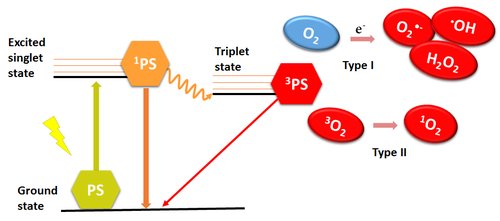-
Home
-
About JCTR
-
Gold Open Access
-
Issues
-
Editorial board
-
Author guidelines
-
Publication fees
-
Online first
-
Special issues
-
News
-
Publication ethics
-
Partners
-
Submit your manuscript
-
Submit your review report
-
Editorial Office
-

This work is licensed under a Creative Commons Attribution-NonCommercial 4.0 International License. ISSN print: 2382-6533 ISSN online: 2424-810X
Volume 1 Issue 3
Antibacterial photodynamic therapy: overview of a promising approach to fight antibiotic-resistant bacterial infections
Yao Liu, Rong Qin, Sebastian A. J. Zaat, Eefjan Breukink, Michal Heger
Liu et al., J Clin Transl Res, 2015; 1(3): 140-167
Published online: 1 December, 2015
Abstract
Antibacterial photodynamic therapy (APDT) has drawn increasing attention from the scientific society for its potential to effectively kill multidrug-resistant pathogenic bacteria and for its low tendency to induce drug resistance that bacteria can rapidly develop against traditional antibiotic therapy. The review summarizes the mechanism of action of APDT, the photosensitizers, the barriers of PS localization, the targets, the in vitro, in vivo, and the clinical evidence, the current development against both Gram-positive and Gram-negative bacteria, the limitations, as well as some future perspectives.
Relevance for patients: A structured overview of all important aspects of APDT is provided in the context of resistant bacterial species. The information presented is relevant and accessible for scientists as well as clinicians, whose joint effort is required to ensure that this technology benefits patients in the post-antibiotic era.

DOI: http://dx.doi.org/10.18053/jctres.201503.002
Author affiliation
1 Department of Membrane Biochemistry and Biophysics, Utrecht University, the Netherlands
2 Department of Medical Microbiology, Academic Medical Center, University of Amsterdam, the
Netherlands
3 Department of Experimental Surgery, Academic Medical Center, University of Amsterdam, the
Netherlands
*Corresponding author:
Yao Liu
Department of Membrane Biochemistry and Biophysics, Utrecht University, Kruyt building, Padualaan 8, 3584 CH, Utrecht, The Netherlands
Tel: +31-30-2532465
Email: y.liu3@uu.nl
Handling editor:
Rowan van Golen
Department of Experimental Surgery, Academic Medical Center, University of Amsterdam, Amsterdam, The Netherlands

